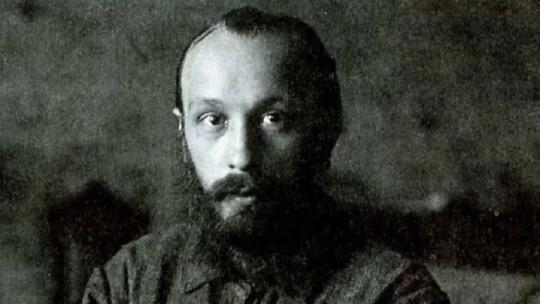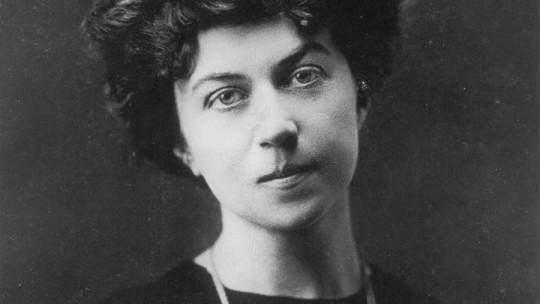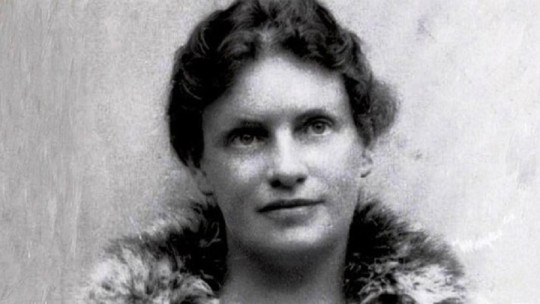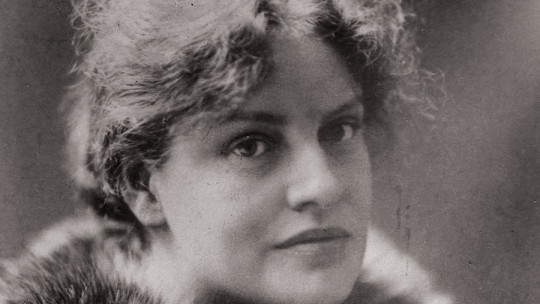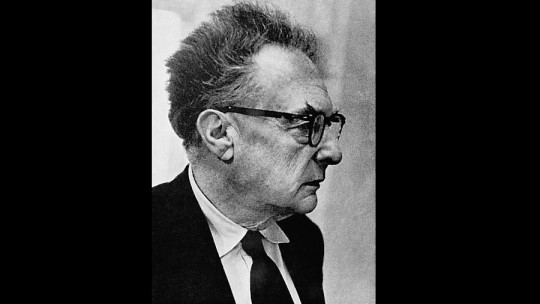The name of Mikhail Bakhtin is not very well known In fact, he himself did not want to become a famous person and always surrounded himself with a halo of mystery and anonymity, whether by his own will and desire or because the political situation in his native Russia did not allow it.
Despite this, the truth is that in his time he became a great reference and even created a group of intellectuals and artists who revolved around Bakhtin. Furthermore, after the fall of the Soviet Union, his work became better known and became popular in the first world.
Of course, the figure of this philosopher of language, theorist and literary critic arouses great interest today, especially his theory of dialogism. In this article Let’s see a biography of Mikhail Bakhtin with his life and his contributions to the study of language and literature.
Brief biography of Mikhail Bakhtin
Mikhail Mikhailovich Bakhtin (also spelled Bakhtin or Bakhtine) was born on November 17, 1895 in Oryol, former Russian Empire. He was a member of a declining aristocratic family. Due to the profession of his father, who was a bank manager, Bakhtin moved several times during his childhood, living in cities such as Vilnius and Odessa.
At the age of 9, he began to show symptoms of osteomyelitis that would accompany him throughout his life and, which would cost him the amputation of a leg several decades later. This first experience with suffering, especially with the fact that his body was seriously affected, marked him for life and influenced his work.
Formation and post-revolution period
Bakhtin began his studies at the University of Odessa between 1913 and 1916, but later He moved to the University of Saint Petersburg/Petrograd to study philosophy and literature until 1918.
After the Russian Revolution, Bakhtin had the opportunity to establish contact with great cultural figures of the time. He met with scholars, philosophers, thinkers and artists of various arts that, over time, would form what would be called “The Bakhtin Circle.”
Bakhtin’s circle
This circle, as its name indicates, focused on the thought and work of Mikhail Bakhtin and united its members with an interest in German philosophy. This group organized public lectures, nightly dialogues and plays.
in the circle The social and cultural problems that Soviet society was suffering were addressed from a philosophical perspective Although the Russian Revolution promised great liberation for the proletariat at first, over time the new regime degenerated into Stalin’s dictatorship.
The work of Bakhtin and those who involved him focused on social life in general, emphasizing how artistic creation occurred at that time as a form of expression of the concerns and concerns of society. Special importance was taken of how the language reflected the conflicts between the new social classes that emerged as a result of the change of government.
According to the circle, linguistic production is, or at least should be, dialogic in that it is a social interaction. That is, in the same way as in a normal conversation between two people, who speak and listen to each other, the powers and the people should engage in dialogic communication.
Traditionally, The most powerful classes, whether economically or politically, try to impose a single discourse , trying to define it as the exemplary, which also implies trying to impose a single vision. On the other hand, the only thing the less favored classes receive is a message given in the form of a monologue, an imperative. That is, they have no say in how government should be governed or, in the most serious cases, they risk being “silenced.”
Stalin’s era: exile and literary production
During Joseph Stalin’s regime, several maneuvers were carried out to put an end to any critic of the government of what was already the well-established Soviet Union. Bakhtin’s circle fell victim to this persecution, and several of its members were executed. Mikhail Bakhtin himself suffered these interventions personally, but to his “fortune” he was simply exiled to Kazakhstan.
Despite his prolific literary activity and his great knowledge, The fact that he had been persecuted by the Stalinist government caused him great discredit upon returning to public life in the 1940s.
During those years he worked in a thesis focused on laughter, which later became one of his most important works, Rebelais and its world This work is one of Bakhtin’s great contributions towards a more parodistic type of literature.
Despite the bad reputation he had acquired for being critical of the regime, he regained his prestige and years of intense literary production began while living in Moscow during the 1940s.
Last years
After living in Moscow, Mikhail Bakhtin moved to Saransk, another Russian city where he had the opportunity to work as a teacher in an Institute specialized in pedagogy in the region. From 1957 to 1961 worked as head of the department of Russian and world literature until his health problems forced him to retire.
Bakhtin died on March 7, 1975 in Moscow, Russia, at the age of 79.
Work and thought
Bakhtin’s work is included within Russian formalism. During the 1920s his work focused mainly on ethics and aesthetics.
Among the great works of this Russian theorist, it is worth highlighting four works that are crucial to read to understand Bakhtin’s complex theory:
1. Towards a philosophy of the act
Although this essay has not been completely recovered, it seems that in it Bakhtin explained his particular way of understanding how human beings understand the world around them and interpret it.
This work suggests what would later be characteristic of the ethical and moral vision of this Russian author It defends the idea that explains the understanding of each human being that he is a unique being.
According to what has been recovered from the work, it is explained how people understand that we act both actively and passively in our own existence, whether physical or emotional.
It also stipulates that our perception of uniqueness exists only to the extent that we think about it and that, as we are irreplaceable beings, we must update this idea that we are unique.
These premises are complex and, as his literary career evolved, he more precisely specified what all this meant.
2. Problems of Dostoyevsky’s poetics
In this work he exposes that, at an individual level, people are not completely definable on the outside According to the idea behind this explanation, it is not possible to truly describe a person if you are not that person, since you cannot feel aspects such as his emotionality.
According to Bakhtin, Dostoyevsky, in his works, tried to portray the characters in his works contrary to what many writers did, avoiding treating them as if they were objects that could be approached from different perspectives.
Furthermore, it is thanks to the work of Dostoyevsky that Bakhtin proposes the concepts of polyphony and dialogism
Polyphony, referred to in the literary field, is the fact of exposing several characters in a novel and having them be in charge of explaining its internal world, without having to resort to the narrator or the main character, if there is one.
3. Rabelais and his world
It is a work in which he analyzes the social system of the Renaissance, focusing on language. His objective was to see what the balance was between the language that was allowed at that time and that which was not.
4. Dialogical imagination
This work, which is posthumous, is about a set of essays by Bakhtin in which he discusses topics related to language It introduces and details concepts such as heteroglossia, dialogism and chronotope.
The term dialogic, especially related to Bakhtin’s dialogism and which has become the most notable idea of his long professional career, is somewhat complex to explain. It refers to the fact that the information handled by two people who are having a conversation is not something static.
People, in their communicative interactions, they modify jointly with the meanings of the words they use , either because the receiver wants to give it a specific meaning or the receiver misinterprets it. Also, words can be used in an alternative way to the meaning that they have been socially assumed to have.
Heteroglossia refers to the fact that there are different registers between people. This is especially applicable to novels, in which the register of the characters and that of the narrator do not have to coincide in aspects of the use of colloquialisms, solemnity, use of the first and third person…
Finally, chronotope is how references to space and time are made in language and discourse. That is, what are the terms and expressions that are used to describe and indicate places and times, whether in the novel or in an article about a real event.

